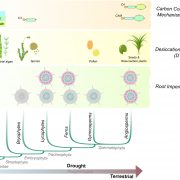
Review: Convergent evolution of gene regulatory networks underlying plant adaptations (Plant Cell Environ.)
Plant Science Research WeeklyThe transition from aquatic to terrestrial habitats exposed plants to low water availability, high light, radiation, and other environmental challenges. To overcome these challenges, plants developed morpho-physiological adaptations to tolerate dry environments and make photosynthesis more efficient.…
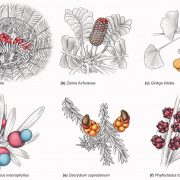
Review: Fleshy structures associated with ovule protection and seed dispersal in gymnosperms (Crit. Rev. Plant Sci.)
Plant Science Research WeeklyWhile traditionally known for having their ovules exposed to the environment, all gymnosperm lineages have species with fleshy seed-associated tissues. Here, Nigris and colleagues provide an overview of the vast diversity of fruit-like structures present in gymnosperms and the hypothesis available to…

Opinion: Plants have neither synapses nor a nervous system (J. Plant Physiol)
Plant Science Research WeeklyThe question “Are plants intelligent?” is raised regularly, with answer often “Well, it depends how you define intelligence.” Another interesting question is whether or not plants have cellular structures that are analogous to those that make up the animal nervous system. Robinson and Draguhn…
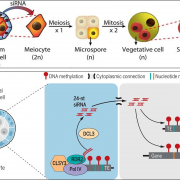
Nurse cell–derived small RNAs define paternal epigenetic inheritance in Arabidopsis (Science)
Plant Science Research WeeklyNew mechanisms for the production and function of small RNAs continue to be discovered. Previous studies have shown a role for small RNAs in methylation reprogramming. Recently, Long et al. found that the epigenetic reprogramming that takes place in the male reproductive tissues also involves mobile…
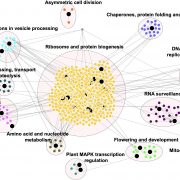
Complex networks of prion-like proteins reveal cross talk between stress and memory pathways in plants (Front. Plant Sci.)
Plant Science Research WeeklyPrions were first identified as the infectious protein agents causative of Creutzfeldt-Jakob disease or bovine spongiform encephalopathy (mad cow disease); when individuals eat something containing these prion proteins, the prion proteins induce conformational changes in their brains leading to neurological…

Plant Science Research Weekly: July 30, 2021
WWR Full PostReview: Convergent evolution of gene regulatory networks underlying plant adaptations
The transition from aquatic to terrestrial habitats exposed plants to low water availability, high light, radiation, and other environmental challenges. To overcome these challenges, plants developed morpho-physiological…
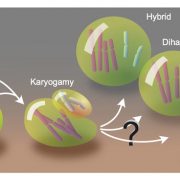
Exploring the parental origin of potato dihaploid DNA
The Plant Cell: In a NutshellAmundson et al. investigate the fate of parental DNA in crosses that produce uniparental dihaploids
By Kirk Amundson and Luca Comai
Background: Plants carrying only the chromosomes of one parent, i.e. haploids, are very useful for research and breeding. Certain crosses are known to yield haploid…

Sajina Bhandari: Plant Physiology First Author
Plant Physiology: Author Profiles
Sajina Bhandari, first author of "Triacylglycerol remodeling in Physaria fendleri indicates oil accumulation is dynamic and not a metabolic endpoint"
Current Position: PhD candidate, Institute of Biological Chemistry, Washington State University (WSU), Pullman, WA
Education: BS in Biotechnology,…

Hongxia Zhang: Plant Physiology First Author
Plant Physiology: Author Profiles
Hongxia Zhang, first author of "Seawater exposure causes hydraulic damage in dying Sitka-spruce trees"
Current Position: Northwest Institute of Eco-Environment and Resources, Chinese Academy of Sciences, post-doctoral
Education: Institute of Applied Ecology, Chinese Academy of Sciences, PhD; Inner…

